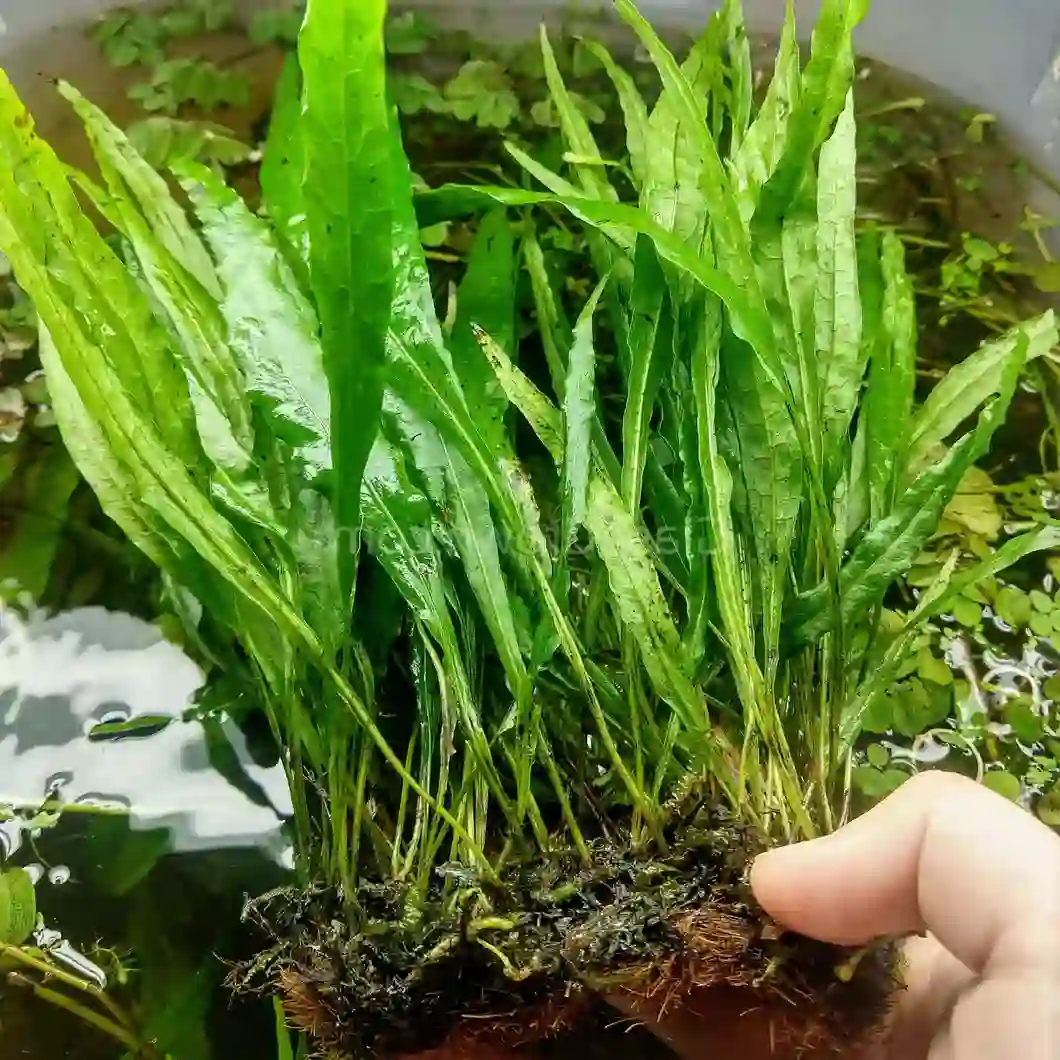Are you looking to add some greenery to your home aquarium? Java fern may be just what you need! This aquatic plant is known for its hardiness, slow growth rate, and ease of care. With the right tank setup and proper care, java fern can thrive and even propagate, creating a beautiful underwater landscape.
Understanding the ins and outs of java fern care and tank setup is crucial for successful propagation. In this article, we’ll go over everything you need to know about growing and propagating java fern.
Key Takeaways:
- Java fern is a hardy aquatic plant that can thrive in your home aquarium.
- Proper care and tank setup are essential for successful java fern propagation.
- With the right knowledge and techniques, you can grow and propagate your own healthy java fern plants.
Understanding Java Fern
Java fern is a hardy aquatic plant that can thrive in a wide variety of water parameters. It is a slow-growing plant that does not require intense lighting conditions to maintain its growth rate. However, to achieve optimal growth, certain conditions need to be met.
Preferred Water Parameters for Java Fern
Java fern prefers water that is slightly acidic, with a pH range between 6.0 to 7.5. It can tolerate a wide range of temperatures, from 68 to 82 degrees Fahrenheit. It is not a picky plant when it comes to water hardness, but it prefers water that is slightly on the soft side. A range of 3 to 8 KH will work well.
Lighting Conditions for Java Fern
Java fern thrives in low to medium lighting conditions. It can survive in low light tanks, but the growth rate will be slower. A moderate lighting setup with full-spectrum bulbs can promote healthy growth.
Substrate Requirements for Java Fern
Java fern will grow well in most substrates, including gravel, sand, or aquatic soil. It is a rhizome plant that does not require planting, and the rhizome should always remain exposed above the substrate to avoid rotting. You can attach java fern to driftwood, rocks, or other decor items, but make sure to avoid burying the rhizome in the substrate.
Understanding the preferred water parameters, lighting conditions, and substrate requirements for java fern can help you provide the ideal conditions for its growth. Take the time to set up your tank properly, and you will be rewarded with healthy, vibrant java fern plants.

Propagating Java Fern: Step-by-Step
If you’re looking to expand your collection of aquatic plants, java fern propagation is an easy and rewarding process. There are two main methods for propagating java fern: rhizome division and spores.
Rhizome Division Method
The rhizome division method involves separating a portion of the plant’s rhizome, which is the horizontal stem from which leaves and roots grow. To propagate using this method, follow these steps:
- Carefully remove the java fern from its current location in the tank.
- Locate the rhizome and identify a healthy portion with several leaves.
- Using a sharp, sterilized knife or pair of scissors, cut the rhizome into sections. Each section should have at least one leaf and a portion of the rhizome.
- Plant the new sections in the substrate, making sure the rhizome is partially buried but the leaves are not covered.
- Continue to care for the new plants as you would with established java fern.
Spores Method
The spores method involves collecting and cultivating the tiny spores that java ferns produce. To propagate using this method, follow these steps:
- Use a sharp, sterilized knife or pair of scissors to cut off a leaf with brown spots on the underside. These spots contain the spores.
- Place the leaf on a piece of paper towel in a dry location and let it sit for several days until the spores fall off.
- Select a suitable planting surface, such as a piece of bark or slate, and moisten it.
- Sprinkle the spores on the surface and mist with water regularly to keep it moist.
- After several weeks, small plantlets should begin to appear.
- Once the plantlets have grown a few leaves, carefully remove them and attach them to a suitable substrate in the aquarium.
Regardless of the propagation method, it’s essential to be patient and handle the new plants gently to ensure their successful growth.
“Java fern propagation can be a fun and rewarding process for aquarists of all skill levels.”
Now that you know how to propagate java fern, you can enjoy expanding your aquatic plant collection and creating a thriving underwater landscape in your aquarium.
Java Fern Care and Maintenance
Keeping your java fern healthy and thriving is essential to ensure successful propagation. Here are some tips to guide you:
Regular Water Changes
Java fern requires a consistent water flow and quality. Regular water changes help to maintain the appropriate water chemistry, temperature, and pH levels in your aquarium. A 20-25% water change is recommended every two weeks to ensure optimal conditions for your java fern.
Nutrient Supplementation
While java fern is a slow grower, it still requires essential nutrients to thrive. Fertilizers specifically designed for aquarium plants can help supplement nutrient deficiencies. Be careful not to over-fertilize, as it can lead to algae growth and harm your java fern.
Pruning Techniques
Trimming your java fern can promote healthy growth and prevent overcrowding. Remove any dead or yellowing leaves by cutting them off at the base. If your java fern begins to outgrow its space, you can divide the rhizome and replant it in another area of the aquarium.
Choosing Compatible Tank Mates
Java fern is a non-toxic and hardy plant, making it a great addition to any community tank. However, it’s crucial to consider tank mates that won’t harm or consume your java fern. Avoid fish prone to nibbling on plants, such as goldfish or cichlids. Instead, consider peaceful species like tetras or guppies.
Addressing Common Issues
Yellowing leaves, slow growth, and black spots are common issues that can occur with java fern. These issues can be caused by nutrient deficiencies, low light, or high nitrates. Addressing these problems promptly will help prevent further damage to your plant. Consider adjusting the lighting conditions, increasing nutrient supplementation or reducing the number of fish in the tank.
By following these tips for java fern care and maintenance, you can ensure robust growth and successful propagation.
Creating an Ideal Java Fern Tank Setup
Setting up an ideal tank for java fern is crucial for ensuring its healthy and thriving growth. Here are some essential tips for setting up your java fern tank:
Water Flow, Temperature, and pH Levels
Java fern thrives in slightly acidic to neutral water with a pH range of 6.0-7.5. Maintain the water temperature between 68-82°F (20-28°C), and ensure adequate water flow to prevent stagnant pockets of water. A light filter will help maintain the right water flow and promote healthy plant growth.
Aquarium Decorations and Substrate
Java fern prefers a substrate that is not too nutrient-rich, like sand or gravel. Avoid using soil-based substrates, as they may trigger algae growth. Add some driftwood or smooth rocks to your tank for a natural look, creating the perfect environment for your java fern to grow in.
Positioning Java Fern in the Tank
The placement of java fern in your tank is crucial to ensure its optimal growth. Secure the plant to a piece of driftwood or rock using fishing line or thread, making sure to avoid burying the rhizome. Position the plant in areas with moderate light intensity and away from direct sunlight. This way, your java fern will thrive and add to the beauty of your aquarium.
Troubleshooting Java Fern Propagation Issues
Java fern propagation can be quite rewarding, but like any plant, it can also come with challenges. Here are some common issues that you may encounter during java fern propagation:
Slow Growth
If you notice slow growth in your java fern plantlets, it may be due to a lack of nutrients or inadequate lighting. Ensure that your tank has the necessary nutrients and consider increasing the amount of light the plants receive. It’s also important to note that java ferns are slow growers, so patience is essential.
Yellowing Leaves
Yellowing leaves may be a sign of poor water quality or inadequate lighting. Ensure that your tank is properly filtered and perform regular water changes to maintain good water quality. Adjust the lighting as necessary, providing enough light for the plants without overexposing them.
Black Spots
Black spots on java fern leaves are often a sign of inadequate water flow or poor water quality. Check your tank’s water flow and perform regular water changes to maintain good water quality. You may also want to consider pruning any affected leaves to prevent the spread of potential infections.
Observing your plants regularly and addressing any issues promptly will go a long way in ensuring successful java fern propagation. Remember to handle the plants with care and patience, and soon you’ll have a thriving aquatic garden in your own home.
Conclusion: Creating Your Perfect American Underwater Eden
Java fern propagation can be a rewarding and exciting experience for aquarium enthusiasts. With the right care and tank setup, you can enjoy the beauty of thriving java fern plants in your own home.
Remember to provide suitable water parameters, lighting conditions, and substrate requirements for the plant’s healthy growth. Regular water changes, nutrient supplementation, and pruning techniques are also essential for its vitality.
Creating an ideal tank setup involves providing appropriate water flow, temperature, and pH levels. Choosing compatible tank mates and positioning the plants for optimal growth and aesthetics is equally critical.
If you encounter any issues during java fern propagation, take prompt action, and troubleshoot the problem. Addressing issues promptly can help promote successful propagation.
By applying the knowledge gained in this article, you can nurture your own thriving java fern plants and create the perfect American underwater Eden in your home aquarium. Happy propagating!













Comments are closed.